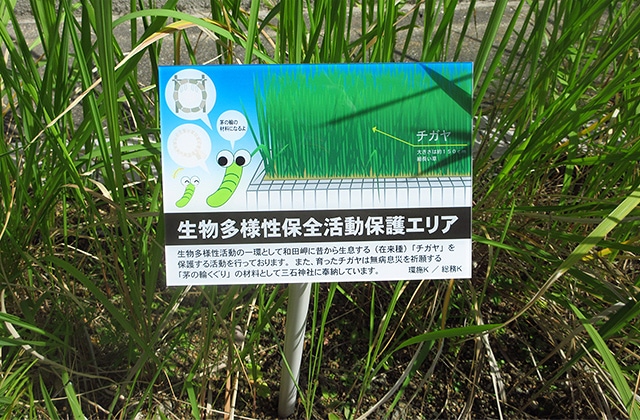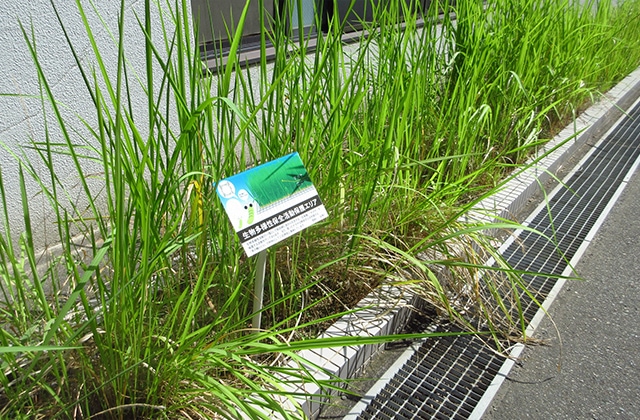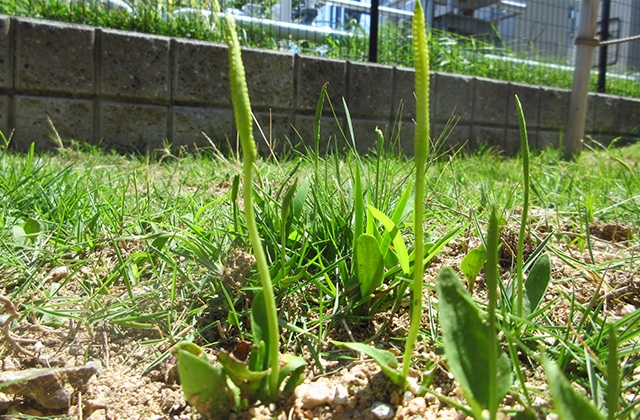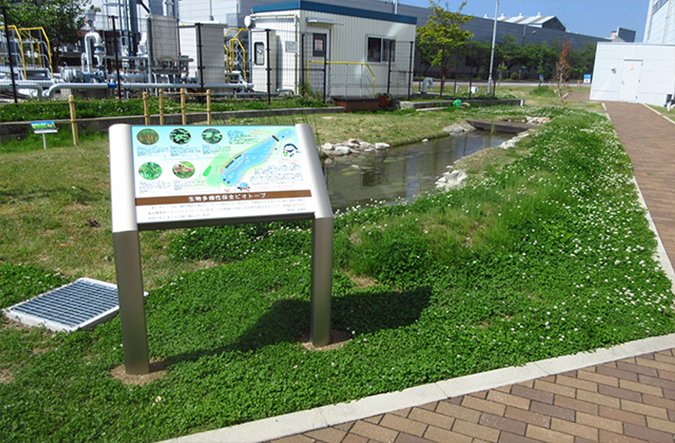Preserving biodiversity at business sites
Kobe area
Promoting Harmonious Coexisting in Nature at Our
Business Sites by Initiating Studies on Living Creatures
Conservation of Native and Rare Species
The Kobe area, home to the Kobe Works and the Energy Systems Center, is located on the eastern side of Cape Wada in Hyogo Prefecture, which juts out into the Seto Inland Sea. Although much of the area is artificially reclaimed land, with guidance from external experts, we have been actively conserving native species such as cogongrass grasslands and rare species like Ophioglossum thermale.
We have established two protected areas within the Kobe area to cultivate cogongrass grasslands, and we have been working to maintain their health through regular watering and mowing. The harvested cogongrass is offered to nearby shrines for ceremonial use, so we are experimenting with growing conditions that produce long stalks and thick leaf stems. To properly remove the invasive species broomsedge bluestem, which is similar to cogongrass in appearance and vegetation characteristics, we are sharing identification methods with local partners.
The rare species Ophioglossum thermale was discovered in the Kobe area in November 2021. To reduce the risk of die-off due to environmental changes, we transplanted part of the discovered population into two newly established conservation areas within the Kobe area. In October 2024, we found another plant resembling Ophioglossum thermale within these conservation areas and are currently working with the University of Hyogo to identify the species.
-

Cogongrass Protected Area 1. Signage installed to raise awareness among employees about the significance of these activities.
-

Cogongrass Protected Area 2. Signage also installed here.
-

Ophioglossum thermale is being cultivated in lawns and flowerbeds.
-

Plant believed to be a different species of Ophioglossum thermale. This plant resembles Ophioglossum thermale, but its leaves are shaped differently.
-

A traditional ritual using a ring made from cogongrass that we provided
Creating a Biotope to Preserve Locally Native Species
In March 2023, we created a biotope within the Kobe area. In this biotope, we are recreating the estuary wetlands and coastal environment that once existed in Kobe City and conserving rare species native to the area.
When the biotope was created, we introduced the locally native plants common club rush, European waterclover, water snowflake, Oriental penthorum, and frogbit, which are now all thriving. In June 2023, we released into the biotope three species of native fish collected from the Akashi River system that flows through Kobe City. Additionally, in November 2024, we collected freshwater shrimp from the Akashi River system and transplanted them to the biotope to prevent the overgrowth of Spirogyra algae.
We have also observed darting dragonflies and their developing larvae in the biotope. In 2024, we confirmed the growth of the rare species Chara braunii. We believe that Chara braunii seeds must have been attached to the wildlife we brought in.
We also collected seeds of the coastal plant seashore pink, which grew naturally in the Kobe area, and are cultivating it in the biotope. The seashore pinks transplanted to the area around the biotope bloomed in 2024 and are growing well. We are planning to expand the area of the biotope to bring it even closer to a natural coastal environment.
-

Biotope recreating estuary wetland and grassland environments
-

Blooming seashore pinks